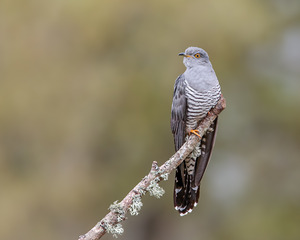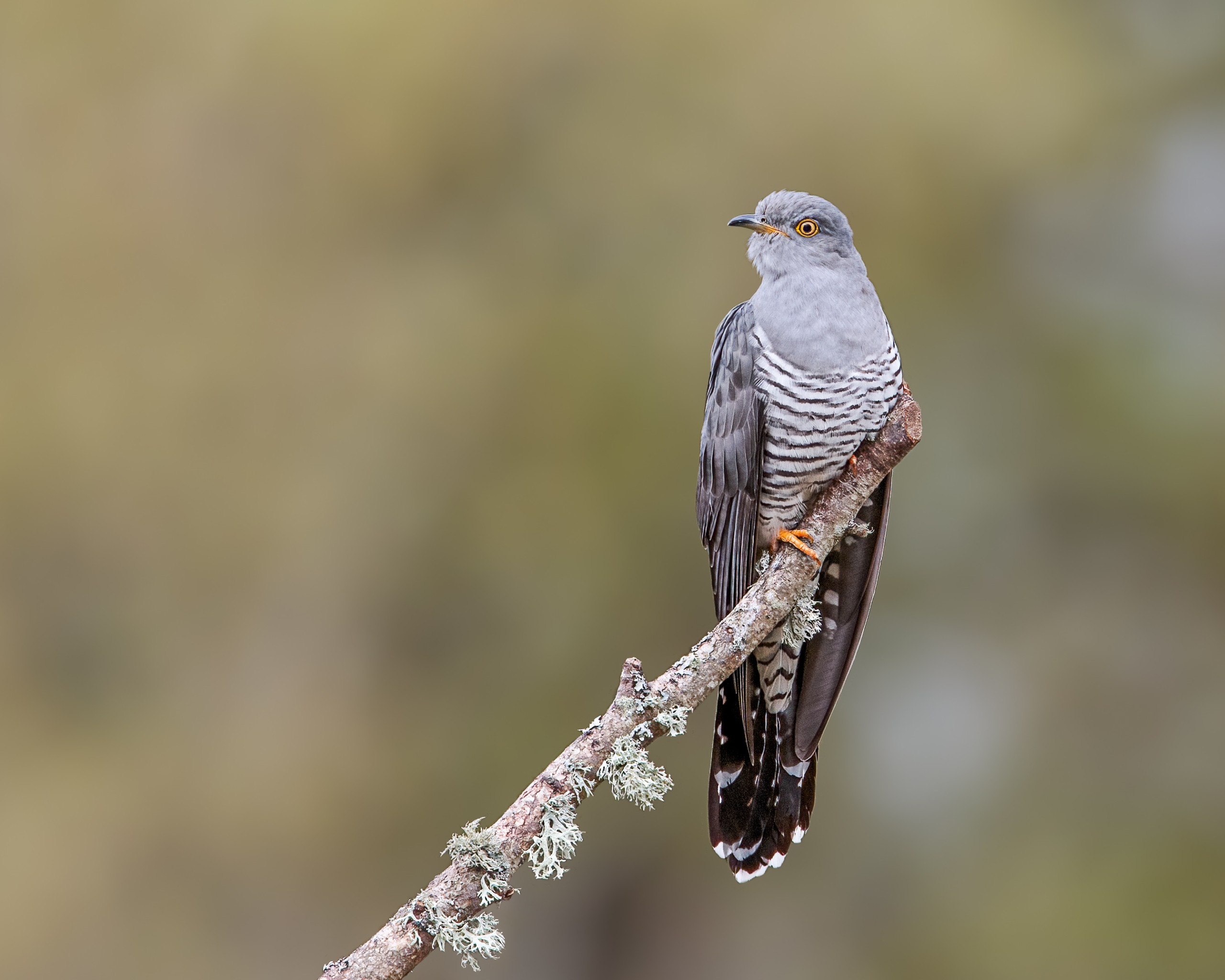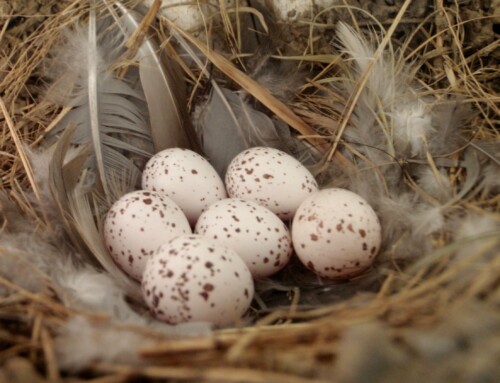 LINKED PAPER
LINKED PAPER
The role of reed management and habitat quality on brood parasitism and chick survival of the brood parasitic Common Cuckoo. Mérő, T.O., Žuljević, A. & Lengyel, S. 2023 Ecology and Evolution. doi: 10.1002/ece3.9705 VIEW
Brood parasite birds, such as the Common Cuckoo (Cuculus canorus) in Europe or the Brown-headed Cowbird (Molothrus ater) in North America, are species that exploit the reproductive effort of their host species (Pollock et al. 2021). Therefore, the survival of the parasite offspring depends on the host’s habitat selection and nesting experience. In order to maximise their chances for survival as nestlings, Cuckoo young evict host eggs and/or nestlings. This sounds quite cruel. However, Cuckoos are also important elements of ecosystems. Let’s explore why! According to recent research, cuckoos are excellent bio-indicator species because their presence predicts hotspots of taxonomic and functional diversity of bird communities in landscapes (Morelli et al., 2017, 2019). Furthermore, Cuckoos can function as umbrella species, meaning that their presence in an ecosystem exerts positive effects on several other species. In nature conservation, this would mean that by conserving the Cuckoo, we will conserve other species. By monitoring Cuckoo populations, we obtain indirect information about other species, as changes in Cuckoo populations mirror climate suitability and overall trends in populations in bird communities.

Figure 1 A Common Cuckoo young in Great Reed Warbler nest at Veliki Bački Canal near Sombor, northwestern Serbia.
The availability and abundance of potential host birds is central in brood parasitism (Procházka et al., 2010). However, the availability of hosts itself is not enough for successful parasitism. For example, some ponds with high host abundance attract a number of adult Cuckoos for breeding, but due to unfavourable vegetation structure, host nests remain poorly parasitized, and those being parasitized have low nesting success because of different anti-parasitism mechanisms in the host and adverse weather circumstances. Such circumstances can trap cuckoos in an ecological trap, where seemingly attractive habitats produce few or no recruits (Mérő & Žuljević, 2019). Cuckoos use perches, such as shrubs, trees, or electric wires, as perches that serve as observation spots. From the perches, Cuckoos observe the behaviour of the hosts and detect the location of their nests (Moskát & Honza, 2000). Closer perches provide better possibilities for detecting nests, while distant perches reduce the possibility of nest detection (Moskát et al., 2008). The likelihood of brood parasitism is also determined by nest concealment; well-concealed nests are difficult to parasitize (Mérő & Žuljević, 2019). The survival of Great Reed Warbler (Acrocephalus arundinaceus) nests depends on water depth and water level fluctuation as well (Mérő et al., 2014, 2020). Therefore, we believe that these variables play an important role in Cuckoo nest survival. So far, we have little information on how habitat management can affect the breeding of Cuckoos.

Figure 2. After reed management by vegetation removal on small canal (a), and reed burn on mining pond (b).
In our study, we found and monitored 1,534 Great Reed Warbler nests, of which 303 were parasitized by Cuckoos. The rate of parasitism differed between different canals, mining ponds, and marshes. For example, canals with rich surrounding shrub or tree vegetation had the highest parasitism rates, up to 40%, while marshes and ponds with larger reed beds and perch points at a greater distance had low or no nest parasitism. In reed habitats with many and close perches, host nests were more frequently parasitized. Host nests built higher were more vulnerable to parasitism. We also found that the survival of Cuckoo eggs and young was lower in deep water. In deep water, the reed growth is reduced, the stems may be weaker, and their density may be lower (Graveland 1998), which makes them often unable to hold nests with a heavy Cuckoo nestling. Such nests are more susceptible to adverse weather conditions. In our study, we did not find evidence that reed management influenced the probability of brood parasitism or the survival of Cuckoo eggs and nestlings. However, in order to attract quality hosts, habitat management by reed mowing or removal should be applied to maximise host density (Mérő et al. 2016, 2020). The water level of different reed habitats should be maintained at an intermediate depth during the spring and autumn to ensure healthy growth of the reed stands, which are able to provide quality nesting sites, ensuring higher nesting success for host birds and Cuckoos as well.

Figure 3. A small canal where perches for Cuckoos are at great distance from reedbed (a), and a large canal where Cuckoo perches are immediately located next to the reedbed.
References
Graveland, J. 1998. Reed die-back, water level management and the decline of the great reed warbler Acrocephalus arundinaceus in The Netherlands. Ardea 86: 187-201. VIEW
Mérő, T. O., & Žuljević, A. 2019. The effects of reed density, surface and management on the probability of cuckoo (Cuculus canorus) parasitism on great reed warbler (Acrocephalus arundinaceus) nests. Ethology, Ecology & Evolution 31: 98-104. VIEW
Mérő, T. O., Žuljević, A., Varga, K., Bocz, R., & Lengyel, S. 2014. Effect of reed burning and precipitation on the breeding success of great reed warbler, Acrocephalus arundinaceus, on a mining pond. Turkish Journal of Zoology 38: 622-630. VIEW
Mérő, T. O., Žuljević, A., Varga, K., & Lengyel, S. 2016. Wing size-related reed habitat selection by great reed warbler (Acrocephalus arundinaceus) males. The Auk: Ornithological Advances 133: 205-212. VIEW
Mérő, T. O., Žuljević, A., Varga, K., & Lengyel, S. 2020. Wing size-related habitat choice of great reed warbler females: the role of habitat quality and management. Avian Conservation & Ecology 15: 22. VIEW
Morelli, F., Møller, A. P., Nelson, E., Benedetti, Y., Liang, W., Šímová, P., Moretti, M., & Tryjanowski, P. 2017. The common cuckoo is an effective indicator of high bird species richness in Asia and Europe. Scientific Reports 7: 4376. VIEW
Morelli, F., Benedetti, Y., Moravec, D., Jerzak, L., Tryjanowski, P., Liang, W., & Møller, A. P. 2019. Global congruence between cuckoo species richness and biodiversity hotspots. Biological Conservation 232: 28-34. VIEW
Moskát, C., Hansson, B., Barabás, L., Bártol, I., & Karcza, Z. 2008. Common cuckoo Cuculus canorus parasitism, antiparasite defence and gene flow in closely located populations of great reed warblers Acrocephalus arundinaceus. Journal of Avian Biology 39: 663-671. VIEW
Moskát, C., & Honza, M. 2000. Effect of nest and nest site characteristics on the risk of cuckoo Cuculus canorus parasitism in the great reed warbler Acrocephalus arundinaceus. Ecography 23: 335-341. VIEW
Pollock, H. S., Hoover, J. P., Uy, F. M. K., & Hauber, M. E. 2021. Brood parasites are a heterogeneous and functionally distinct class of natural enemies. Trends in Parasitology 37: 588-596. VIEW
Procházka, P., Požgayová, M., Honza, M., & Šicha, V. 2010. Nest defence in a cuckoo host: Great reed warblers risk themselves equally for their own and parasitic chicks. Behaviour 147: 741-756. VIEW
Image credit
Top right: Common Cuckoo © Andy Morffew CC BY 2.0 Wikimedia Commons.
If you want to write about your research in #theBOUblog, then please see here.




